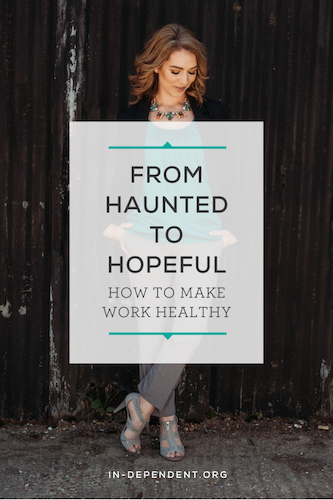“It doesn’t get easier, you just get stronger.”
I’ve written and rewritten this story so many times, with undertones of various kinds. It strikes me as important that you know I am writing from a good place today—from hope. But it wasn’t always that way, so I’ll share that, too.
MY JOURNEY THROUGH PAIN
“I don’t trust my body.” The woman on the table with another physical therapist in front of me had nailed it. That is how I had felt for so long. She had a leg injury, but injuries are all kind of the same at a certain point. I continued my workout and left with empathy for her. I knew what it’s like to not know if things will ever get better.
I have lived with varying chronic pain for nineteen years. Yes, this is more than half of my life and I had to count the years. I was fourteen when my sports injury—a nasty fall from ten feet in the air, leaving me with lasting deep tissue damage in my right shoulder—happened in high school. It wasn’t fully treated but I went on compensating for my injury as a resilient teen. This was the injury that would dash my hopes of serving as an Air Force officer and pilot four years later. Over time, compensation turned into bad habits, habits turned into sometimes debilitating pain, and finally when I could not take it anymore, I sought help. I have lots of friends and family who are disabled veterans, have serious illnesses, or who’ve had surgeries for things far worse than what is causing my pain. But, it has affected my life so greatly it is now my story whether I like it or not.
HAUNTED BY MY INJURY
My spouse knows more than anyone how daily cleaning, cooking, or repetitive motions were hard the past couple of years, and he compensated for me. People would plan things like a spouses’ ropes course, team bowling, or would need help carrying things in and out of an event that I simply could not do. Adjusting to people’s expectations and perhaps letting them down was necessary. But worst of all, I missed out on vital parts of my babies’ youth—the carrying, holding, and fun stolen by pain and protecting “mommy’s bad arm.” These are moments I will never get back, and that forever breaks my heart. I have been poked, prodded, on meds, diagnosed, and misdiagnosed. At my worst moment, my whole arm was in spasms and not functioning, all while dealing with my two young children, a deployed spouse, and incomplete work that only I could do.
That’s right. Through all of that, I worked remotely from my home on a computer for the past ten years. Never once did I make compensation for this injury or think about what the work I was doing was doing to me in return. Even if it was not the direct cause of the problem, it was worsening it on the deepest levels. We and our bodies are the most important investment in our work and business, yet we protect objects more than we do ourselves. Meaningful remote work, such a hot topic now, was my every day for ten years. I was ahead of the curve there, but no one stressed to me how I should take care to work smartly and with my health in mind.
There were definitely moments when I did not know or trust parts of my body. The injury of my past was haunting every moment of my present, but I fought through it because quitting wasn’t really an option. Even though I cannot remember a time of being completely pain-free in my life, I had to hit a new low before I got to climb back up. I went through five physical therapists over three years before I got to one that helped and gave me hope.
MAKING WORKING AT HOME WORK FOR ME
I learned a lot about not only my body, but the human body in general, and how to cope with and calm my trigger points. I relearned how to vacuum, reach into the cupboard, and even how to position my arms when driving for a long time. More importantly, my now ten years of computer work needed to be adapted for success. Working from home is the best option for me and my family, so I have to make sure it’s done in a way that’s healthy, smart, and correct. You should too! It took time, knowledge, and skills to fix what was wrong with me and if I had believed one of those people who told me it couldn’t be done, I’d still be crying somewhere protecting my arm. Along with strengthening my shoulder, I needed to make adjustments to the way I sit at my desk, how far I reach to my keyboard, the angle my arm sits at when I work for long spans of time, etc. The list goes on and every bit of it helped so much!
5 TIPS TO MAKE REMOTE WORK HEALTHY
Even if you are perfectly healthy, you can take steps to protect your health when working from home in the following ways:
1. Desk: This is an incredibly important factor. I hear all too often that people use what looks nice, or worse, what is available to them. If you have something in your house you are using to “get by” and now intend to work full-time from home, invest in something better. Consider a desk that accommodates your sitting height, standing height, or better still, is adjustable to both heights. There are plenty on the market at the moment that can be adjusted manually or electronically.
Ideally, you should sit or stand with your arms at a ninety-degree angle, while not reaching out to your computer across the desk. Your keyboard should come to you, so your shoulder blades and rotator cuffs are not working in ways they are not designed to for prolonged periods. If you can alternate between sitting and standing, ensure you adjust the work surface, keyboard, and mouse so you are using all ergonomically with your posture in mind.
2. Chair: It’s important to ensure your chair has your best posture in mind, so consider the arm rests, height, and sitting time-span. Adjustable chairs can ensure you are able to work across your range while staying in a healthy posture. If you have a larger desk, a chair with wheels will ensure you do not reach across your surface as often.
3. Distance from objects/breaks: Sitting in front of a computer can take its toll on your body, mind, and energy. Make sure you are taking breaks from your work (set an alarm at regular intervals if you need to) so you can focus and then be able to get up and move around. The distance from your screen to your eyes may also mean you need to spend some time looking farther away, and then back at your screen, to give your eyes exercise and rest.
4. Water/food: One of the hardest things to do while you are in the zone working is to take a break and refuel, with both a good amount of water and nutritious food. Plan ahead and have healthy snacks within easy reach and plenty of water to drink. It is also vital to have a healthy breakfast to start, and a lunch to carry you through the rest of your day.
5. Social aspect: Working from home can be very isolating, and some people can’t even fathom taking the leap into remote work because of it. Make sure you have measures in place to get the social interactions you need, whether that’s going to a coffee shop every so often to work, taking a break, talking with colleagues, or starting “social office hours” when you have a video chat going with another co-worker while you work. Your mental health is just as important as your physical health!
INVEST IN YOUR HEALTH
Invest in yourself and put your health at the top of your assets in your business life. Sometimes, realizing that you are going no further than your greatest limitation is not easy. Overcoming that limitation however, will be one of your greatest accomplishments. Celebrate the future as we move into remote work becoming more common but take care of yourself along the way. I took the longest route to figuring out how much my workplace health mattered, but it was so worth it!
READ MORE
4 Stretches to Fix the Pain in Your Neck
5 Ways to Harmonize Life When You Work Virtually
Office Yoga for When You Want to Destress Your Day
From Haunted to Hopeful: How to Make Work Healthy
ABOUT NIKOLE
Nikole Schmidt is the executive director for The Paradigm Switch, a non-profit that empowers and guides military spouses to work anywhere in the world. With nine years of experience in non-profit development and grant writing experience, she has been a guiding force in the rapid growth of their mission. Nikole is a seasoned active duty Air Force spouse and has a wide-range of experience in community building and ensuring the wellbeing of our military families. She has a BA in Anthropology from the University of Michigan and an MAT from UMUC in Secondary Education, Earth and Space Science.
CONNECT WITH NIKOLE





